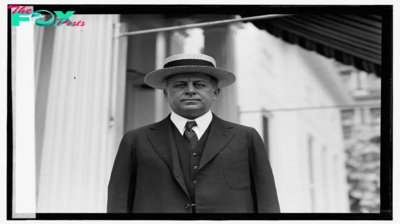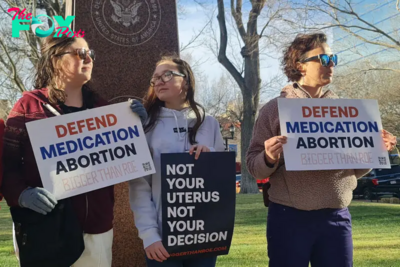Politics
90% of Michigan state troopers are white − why making the force more representative is a challenge
Experts see increasing diversity among police as a key solution to reducing racial bias in traffic stops, arrest rates and officer-involved shootings.
But while police agencies have invested in recruiting more racial minorities and women, progress in diversifying police forces has been slower than the public wants.
As a researcher who works with police agencies to improve their hiring processes, I’m always looking for insights into how to accelerate this progress.
Retention is key
One important strategy focuses on retaining recruits throughout the training period. After all, recruiting diverse trainees means little if they never graduate from the academy and start police work.
To learn more about why some trainees drop out, my co-authors and I examined 88 years’ worth of data on attrition from the academy that trains troopers for the Michigan State Police.
Our main finding is that attrition in Michigan is strongly related to economic trends, with the number of dropouts rising when the overall economy is thriving. However, we also saw higher attrition rates for women and ethnic and racial minorities who started training between 2001 and 2022. This was accompanied by a noticeable rise in attrition across all groups starting around 2014.
Losing these candidates has had an effect. The Michigan State Police reported that as of February 2024, its sworn trooper workforce was 90% white in a state that is 77% white.
The Michigan State Police has long struggled to maintain a diverse workforce. It hired its first Black trooper in 1967, but it operated under a consent decree – a court-ordered plan for addressing findings of discrimination – from 1977 until 1993, with the trend of declining diversity being a point of concern for the past decade.
Beyond struggling with diversification, many police agencies face critical staffing shortages, with a 19.6% decline in officers in Michigan from 2001 to 2023. Staffing shortages require current troopers to work long hours, leading to greater burnout and potentially slower response times. While there is some evidence that hiring may have increased in the past year, challenges remain.
So how can recruiters ensure that minorities and women complete police training and make the transition to trooper?
Police work is complex
To answer that question, it helps to consider what police work requires.
An effective police officer needs extensive knowledge, skills and abilities. They must master legal procedures, make quick decisions and handle stress while maintaining integrity and empathy. They need excellent verbal communication and interpersonal skills. They must de-escalate violence and comfort the traumatized.
Physical strength and fitness are essential for disarming threats and rescuing the injured.
Psychological health is crucial, especially given the heightened focus on preventing police brutality. Police forces must maintain high standards, even during workforce shortages.
In research with the Michigan State Police, my colleagues and I found that many recruits express “culture shock” regarding the job’s demands.

Family concerns about the danger of the job and the realities of night shifts and working holidays contribute to a lack of willingness of many people to apply or remain in training.
Research also finds that ethnic and racial minorities are less likely to have family and friends who have been police and thus have less insider knowledge of what the job entails.
Agencies are addressing these challenges with prep programs that help individuals understand the demands of this challenging job before hiring. They also are engaging with families of recruits, mentoring them and focusing on trooper wellness from the start.
What repels, what attracts
My colleagues and I also examined how students pursuing degrees in criminal justice decide policing is not a viable option.
We found they turned away from policing because of the dangerous conditions and working hours, a belief that police work lacked meaning, and a poor image of policing.
Women and nonbinary people were approximately nine times more likely – and racial and ethnic minorities 40 times more likely – to eliminate policing as a career option than their white male counterparts. Instead, these groups said they pursued opportunities in federal law enforcement, probation, corporate security and the law.
Our data shows about a quarter of racial and ethnic minorities explicitly noted concerns about the public’s distrust of policing and the potential for experiencing bias from both the public, such as taunts and insults, and from the organization in terms of assignments and promotions.
Guidance from the National Institute of Justice shows that providing consistent messaging regarding resources and support for diversity can improve attraction.
Research my colleagues and I conducted suggests that stronger messaging emphasizing the value of police work in recruiting materials would attract more ethnic minorities to apply.
Authenticity, transparency needed
Police departments often include photos of ethnic and racial minority officers in advertising. These materials feature statements about diversity and inclusion and highlight community engagement work.
These are evidence-based recruitment practices to signal an inclusive workplace to underrepresented individuals.
Research shows, however, that police work has become a stigmatized profession with diminished moral credibility and eroded trust. Recruiting needs to be adjusted for this reality.
Police agencies frequently face criticism for inconsistent and insincere messaging about diversity, sometimes termed “diversity dishonesty.”
For many recruits, using stock photos to suggest representation that doesn’t exist is disingenuous. Effective community recruitment requires authentic discussions about public distrust related to officer-involved shootings, arrests and other incidents that the public sees as racially motivated.
Our research outside of policing suggests that the public gives more weight to things such as negative online reviews and less to evidence of minority representation or diversity statements.
The challenge of changing the image of the profession as well as of individual agencies is significant. Research shows public apologies have little impact on public support for police because plans for future change are often nonspecific and without clear accountability.
However, transparency about prior critical incidents in the community and efforts at reform can be helpful.
For example, the Michigan State Police has a webpage specifically focused on providing information to the public on personnel, funding, policies, traffic stops, use of force and more.
Avoiding the topic of race and policing history, particularly with those from underrepresented communities, results in distrust and is bound to harm efforts to diversify the police workforce.
-

 Politics1d ago
Politics1d agoThe Last Time the Senate Rejected a President’s Cabinet Nominee of the Same Party
-

 Politics1d ago
Politics1d agoPolice Report Reveals Assault Allegations Against Pete Hegseth
-

 Politics2d ago
Politics2d agoWhy Trump Actually Needs Mexico
-

 Politics2d ago
Politics2d agoMan Convicted of Killing Laken Riley Sentenced to Life in Prison Without Parole
-

 Politics2d ago
Politics2d agoHow the Biden Administration Protected Abortion Pill Access—and What Trump Could Do Next
-

 Politics2d ago
Politics2d agoWhy Trump’s Tariffs Could Raise Grocery Prices
-

 Politics2d ago
Politics2d agoThe First Trans Member of Congress Expected Pushback Like Mace’s Bathroom Rule
-

 Politics2d ago
Politics2d agoNew York Prosecutors Oppose Dismissing Trump’s Hush Money Conviction




















